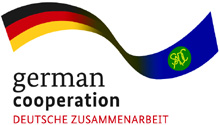System of Rice Intensification (SRI)
System of Rice Intensification (SRI) is an agro-ecological practice for increasing the productivity of irrigated rice cultivation by changing the management of water, plants, soil and nutrients. SRI promotes the growth of root systems, increases the abundance and diversity of soil organisms by keeping the soil moist but not flooded, and provides frequent aeration and conditioning of soil with organic matter. This agro-ecological practice stimulates plant growth by transplanting young seedlings, avoiding disturbance to roots and providing crops with wider spacing to encourage greater root and canopy growth. The agricultural methodology is based on well-founded agro-ecological principles which have been successfully adapted to upland rice and have shown increased productivity over current conventional planting practices.
To effectively implement SRI practices:
- Step 1: Consider separation of high-quality seeds from low-quality seeds through soaking them in plain or salt water and the unviable seeds will float on the surface of the water.
- Step 2: Plant the seeds on an unflooded, raised bed with adequate drainage and fertile soil.
- Step 3: After 8-12 days, transplant single young seedlings into a grind pattern with wide spacing between hills (25 cm x 25 cm).
- Step 4: During crop growth period, control the flooding and research and follow alternate wetting and drying irrigation practices.
- Step 5: Consider application of compost and mineral fertiliser for nutrient enhancement.
- Step 6: Use a mechanical weeder for the control of weeds and maximisation of soil aeration.
- Global Alliance for Climate-Smart Agriculture (GACSA), 2016. The System of Rice Intensification (SRI): Revisiting Agronomy for a Changing Climate.
- Food and Agriculture Organisation (FAO), 2013. System of Rice Intensification (SRI). Rome, Italy.
Benefits
- Increased and diversified crop yield resulting in increased farm income.
- Improved food security.
- SRI reduces GHG emissions.
- Existing water availability patterns to accommodate the irrigation schedule.
Drawbacks
- SRI is a labour-intensive agricultural practice.
- Occurrence of methane emissions from rice fields caused by flooding.
























































